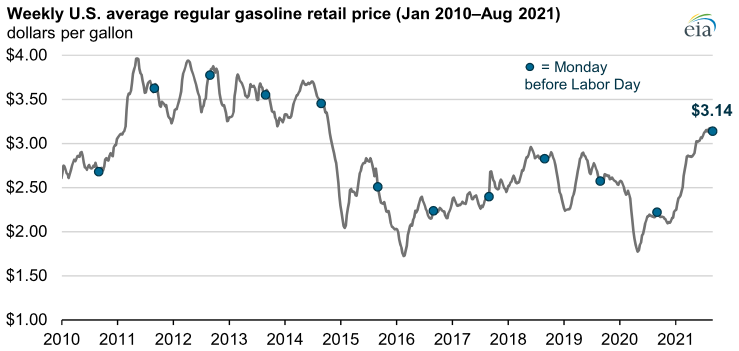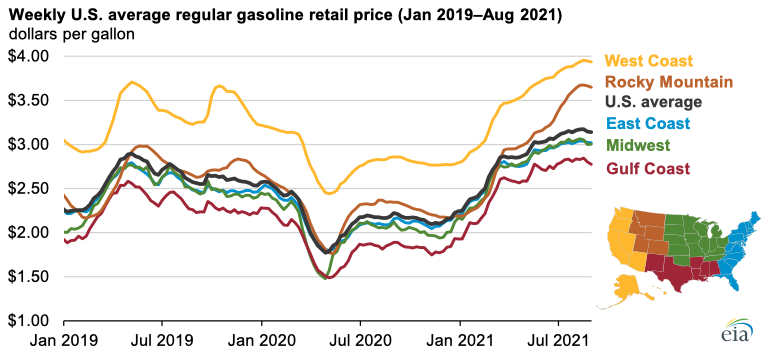On August 30, 2021, the Monday before Labor Day weekend, the U.S. retail price of regular gasoline averaged $3.15 per gallon (gal), an increase of 92 cents/gal (42%) compared with the same time in 2020, according to our Gasoline and Diesel Fuel Update. Pre-Labor Day gasoline prices have increased to their highest levels since 2014.

After the onset of the COVID-19 pandemic in March 2020, U.S. retail gasoline prices fell and eventually declined below $2.00/gal, and they remained below $2.50/gal through the end of 2020. Increasing mobility because of rising COVID-19 vaccination rates in the United States, lower gasoline inventories, and higher crude oil prices all contributed to rapidly increasing gasoline prices. U.S. average regular gasoline retail prices increased to above $3.00/gal beginning in May 2021.

The Rocky Mountain region faces similar logistical constraints as the West Coast, and particularly low inventories this year have contributed to gasoline retail prices averaging $3.65/gal, an increase of $1.30/gal (56%) over 2020. The year-on-year increase for the Rocky Mountain region is the largest of the five U.S. regions in both dollar and percentage terms.
The Gulf Coast accounted for 54% of the country’s total refining capacity as of January 2021, and it produces more gasoline than it consumes. As a result, the price of gasoline in the Gulf Coast is often the lowest in the United States. As of August 30, the average retail gasoline price for the Gulf Coast was $2.77/gal, an increase of 89 cents (47%) compared with the same time last year.
On the East Coast, the largest gasoline demand market of the five regions, retail gasoline prices were $3.02/gal on August 30, an increase of 86 cents (40%) compared with 2020. Midwest prices increased 88 cents (42%) compared with 2020, at $3.00/gal this year. The Midwest and East Coast prices were the closest to the U.S. average price.
Principal contributor: Kevin Hack










